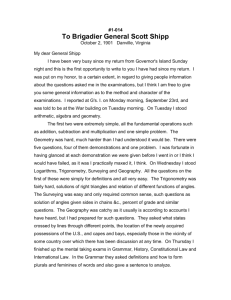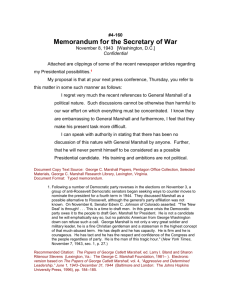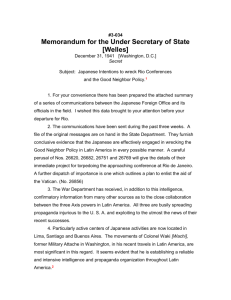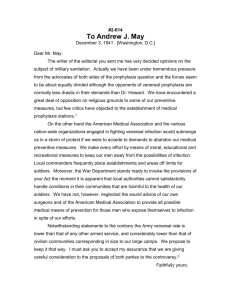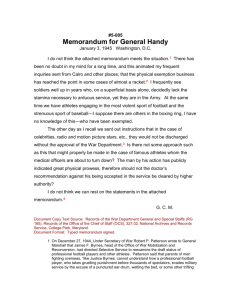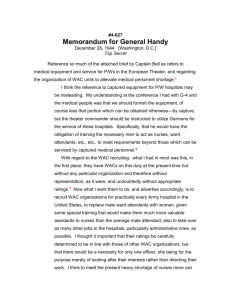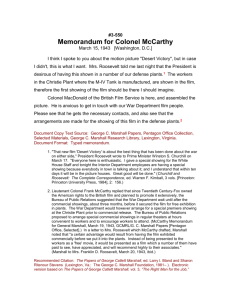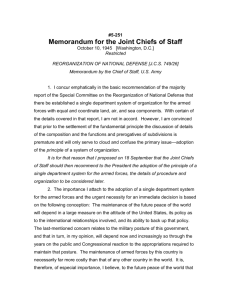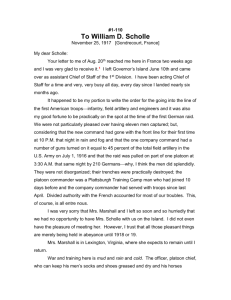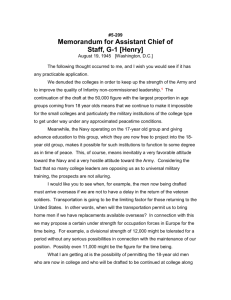4-061 - George C. Marshall Foundation
advertisement
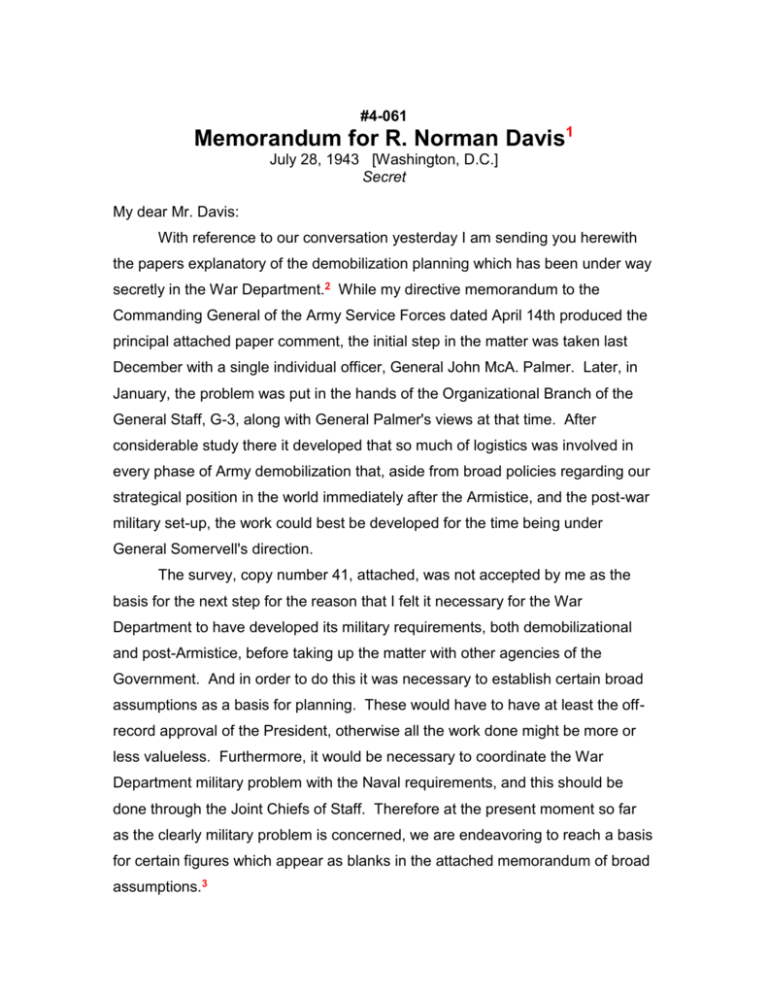
#4-061 Memorandum for R. Norman Davis1 July 28, 1943 [Washington, D.C.] Secret My dear Mr. Davis: With reference to our conversation yesterday I am sending you herewith the papers explanatory of the demobilization planning which has been under way secretly in the War Department.2 While my directive memorandum to the Commanding General of the Army Service Forces dated April 14th produced the principal attached paper comment, the initial step in the matter was taken last December with a single individual officer, General John McA. Palmer. Later, in January, the problem was put in the hands of the Organizational Branch of the General Staff, G-3, along with General Palmer's views at that time. After considerable study there it developed that so much of logistics was involved in every phase of Army demobilization that, aside from broad policies regarding our strategical position in the world immediately after the Armistice, and the post-war military set-up, the work could best be developed for the time being under General Somervell's direction. The survey, copy number 41, attached, was not accepted by me as the basis for the next step for the reason that I felt it necessary for the War Department to have developed its military requirements, both demobilizational and post-Armistice, before taking up the matter with other agencies of the Government. And in order to do this it was necessary to establish certain broad assumptions as a basis for planning. These would have to have at least the offrecord approval of the President, otherwise all the work done might be more or less valueless. Furthermore, it would be necessary to coordinate the War Department military problem with the Naval requirements, and this should be done through the Joint Chiefs of Staff. Therefore at the present moment so far as the clearly military problem is concerned, we are endeavoring to reach a basis for certain figures which appear as blanks in the attached memorandum of broad assumptions.3 Meanwhile the Secretary of War has taken the matter up largely from the viewpoint of industrial adjustments, and in compliance with his desires a memorandum directive was issued July 22nd, also attached, which places this planning on a more general basis. As I explained during our conversation it is very important that this matter be kept completely secret for the time being, otherwise it would give rise (1) to such a feeling that the war is coming to an early end that the civilian effort will relax, and (2) the War Department being brought into a working basis with other agencies before it has developed its requirements. In all this there are three rather distinct factors: a. The demobilization of personnel, which involves a serious problem for the maintenance of morale among those forces which have to be held together for a rather long period. This is my problem and my responsibility. b. The problem of demobilization of war industry set-ups in relation to general economic requirements in the country. c. The problem of post-war national defense. This is a hastily dictated memorandum but I believe it gives you a rough idea of the status of affairs. Document Copy Text Source: George C. Marshall Papers, Pentagon Office Collection, Selected Materials, George C. Marshall Research Library, Lexington, Virginia. Document Format: Typed memorandum. 1. In addition to being chairman of the American National Red Cross, Davis was chairman of the State Department's Security Committee, a member of the Civilian Defense Board, and an adviser to President Roosevelt on postwar food, rehabilitation, and relief problems. 2. The attachments Marshall mentions in this document are not printed here. 3. See Marshall Memorandum for the Joint U.S. Chiefs of Staff, July 30, 1943, Papers of George Catlett Marshall, #4-064 [4: 74–76]. Recommended Citation: The Papers of George Catlett Marshall, ed. Larry I. Bland and Sharon Ritenour Stevens (Lexington, Va.: The George C. Marshall Foundation, 1981– ). Electronic version based on The Papers of George Catlett Marshall, vol. 4, “Aggressive and Determined Leadership,” June 1, 1943–December 31, 1944 (Baltimore and London: The Johns Hopkins University Press, 1996), pp. 70–71.
